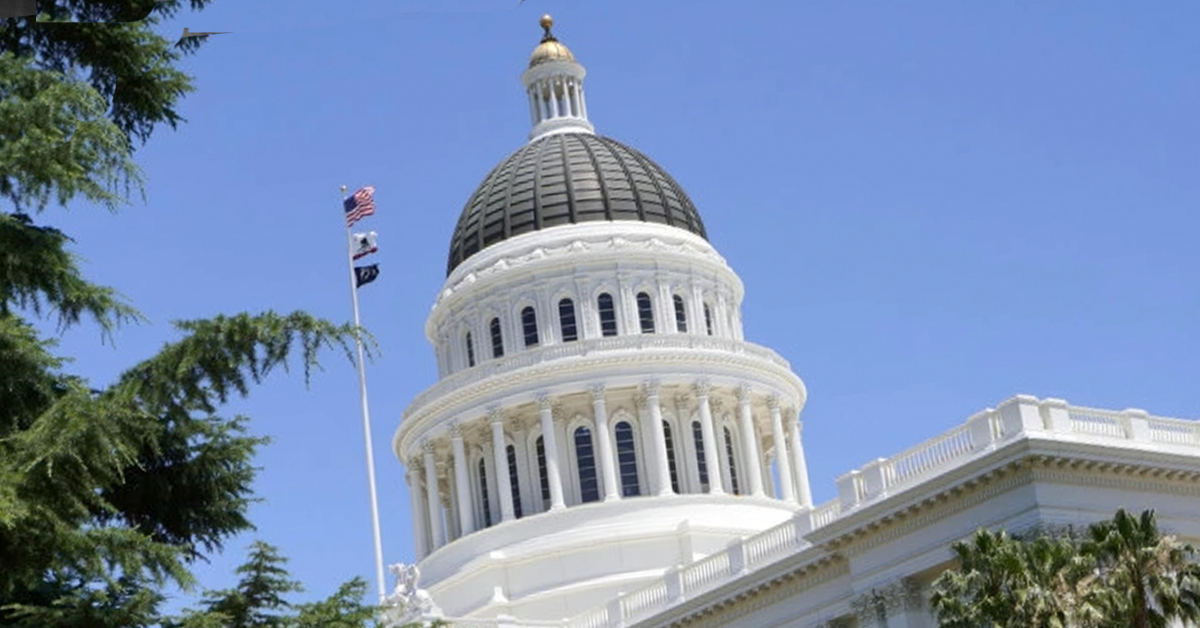Steve Hogg, former boss of Fresno’s wastewater treatment plant west of town, taught me to see value in everything that happens out there.
That’s how I came to take an interest in an item on the City Council’s Jan. 17 agenda: “Actions pertaining to the removal, processing, and beneficial reuse or other environmental friendly alternative disposal of Biosolids.”
As things turned out, the item was removed from the agenda by staff. City Clerk Yvonne Spence from the dais gave no indication when, or if, the item would return for a public airing.
But, in light of the fact that Fresnans have to eat, thus producing a continuous supply of “biosolids,” I believe it’s worth taking a look at the original proposal.
In a nutshell, City Hall wants to pay millions of dollars to two companies to take Fresno’s biosolids off our hands. The companies plan to turn the biosolids into assets that advance their corporate missions.
I thought to myself: Why isn’t the cash transaction going in the other direction? Why aren’t we selling the biosolids?
Here are the original deal’s basic points as outlined in the Jan. 17 Public Utilities staff report.
1.) The report doesn’t define “biosolids.” We all know what we’re talking about.
2.) The treatment plant (serving the Fresno-Clovis metropolitan area) generates up to 100,000 “wet” tons of biosolids per year. On average, that’s 250 to 300 wet tons per day – 500,000 to 600,000 pounds every 24 hours. A “wet” ton is biosolids retaining much of its moisture. Remove the moisture from something and the weight drops. Then you’re in the world of “dry” tons.
3.) Public Utilities last fall issued a request for proposal, seeking the private sector’s help with all those biosolids. The process led to Public Utilities Director Michael Carbajal making two recommendations to the council.
4.) The first is to approve a three-year contract with two one-year options with Synagro Technologies for $10,155,000.
5.) The second is to approve a three-year contract with two one-year options with Holloway Environmental for $6,372,000.
6.) Synagro in a typical year will handle between 50,001 and 75,000 tons of Fresno-Clovis biosolids.
7.) Holloway in a typical year will handle between 25,000 and 50,000 tons of Fresno-Clovis biosolids.
8.) Synagro will use its biosolids for composting. Holloway will use its biosolids for mine reclamation and soil amendment.
9.) Synagro in the staff report is described as “a California leader in cost-effective solution systems, processes, technologies and facilities that transform natural waste and wastewater challenges into safe, beneficially reusable options that are environmentally and people-safe, sustainable and beneficial to the environment.”
10.) Holloway, the staff report says, “has been in the landfill-reclamation business for 22 years. Holloway performs open pit mining operations. And to refill these open areas back to their natural state, Holloway has a defined plan that allows biosolids and fly-ash to be comingled together in order to kill any residual parthenogens and to reduce additional moisture within the biosolids. Holloway will then cap the remaining 3 feet with natural soil; this (will) bring the area back to its natural state and will allow Holloway to perform agricultural operations and add future composting facilities… on top of the reclaimed mine area.”
Fresno City Hall needs to find a way to reuse 100,000 tons of biosolids every year. At the same, it strikes me that Synagro and Holloway are very much in need of all those biosolids. Yet, we’re apparently going to pay the two companies a total of $16.5 million over the life of the contracts to accept from us what they need. That $16.5 million will come from local ratepayers.
As I understand it, the biosolids arrive at the treatment plant through a delivery system funded by ratepayers. Those biosolids, which arrive with a great deal of wastewater, then go through a processing system that renders them useful to the broader world from which they came. This processing system also is also funded by ratepayers.
The U.S. Environmental Protection Agency’s website devotes considerable space to extolling the earth-friendly virtues of properly processed biosolids.
“After treatment and processing, biosolids can be recycled and applied as fertilizer to improve and maintain productive soils and stimulate plant growth,” the EPA writes. “The controlled land application of biosolids completes a natural cycle in the environment.”
The land application of biosolids occurs in all 50 states.
“About 50% of all biosolids are being recycled to land,” the EPA writes. “These biosolids are used on less than one percent of the nation’s agricultural land.”
The feds have strict rules on the use of biosolids, especially when farms are involved. But meeting those rules can lead to environmental and economic success.
“Agricultural use of biosolids that meet strict quality criteria and application rates have been shown to produce significant improvements in crop growth and yield,” the EPA writes. “Nutrients found in biosolids, such as nitrogen, phosphorus and potassium and trace elements such as calcium, copper, iron, magnesium, manganese, sulfur and zinc, are necessary for crop production and growth. The use of biosolids reduces the farmer’s production costs and replenishes the organic matter that has been depleted over time. The organic matter improves soil structure by increasing the soil’s ability to absorb and store moisture.”
Finally, the EPA notes that biosolids “may be composted and sold or distributed for use on lawns and home gardens. Most biosolids composts are highly desirable products that are easy to store, transport and use.”
Now, I’m not suggesting that there’s anything amiss with the proposed deals with Synagro and Holloway. But there’s clearly something about the operation of the biosolids market that leaves cities such as Fresno no choice but to spend handsomely to turn human waste into the valuable resource that nature intended, then spend handsomely again to convince someone to take that valuable resource off their hands.
I just wish the Jan. 17 staff had explained those market dynamics. Fresnans paying for service from the Department of Public Utilities have been conditioned by City Hall to view what once was considered to be mere refuse as valuable commodities. That’s why we have recycling bins. That’s why the Purple Pipe/treated wastewater system holds such promise. Why are biosolids any different?
When you get right down to it, the biosolids issue at the wastewater treatment plant is part of the larger picture we’ve come to know as Recharge Fresno. The essence of Recharge Fresno is sustainability in a complex world.
Public Utilities most likely will have a second chance to enlighten ratepayers as to why the reuse of biosolids requires a $16.5 million expenditure. The City Council should make sure this lesson happens.
After all, a new five-year Public Utilities rate plan most likely is just around the corner.








It is so important to understand that sewer sludge aka biosolids is NOT just human excrement – it is a concentration of all domestic and industrial pollutants that go down drains and sewers. It has some good stuff in it, which plants can use, but a huge load of thousands of other contaminants. Please read what independent scientists have to say on this issue – http://biosolidsbattleblog.blogspot.com/
Prof. Murray McBride, Cornell University – “Agricultural soils are a unique and valuable resource. Protecting agricultural soils requires anticipating and avoiding potential harms since once contaminated with persistent pollutants, the damage will remain for the foreseeable future.” … “Is it reasonable to conclude that there is little or no risk of land-applying a material (biosolids) containing unknown concentrations of thousands of chemicals with undetermined toxicities?”
Prof. Jordan Peccia- Yale University – “Land application is often accompanied by strong odors, and biosolids contain heavy metals, hazardous organic chemicals, microbial pathogens, and antibiotic resistant bacteria … A recent study found more than 27 different forms of human viruses in the sewage sludges of five large U.S. cities, ranging from Adenovirus to Corona virus to HIV. … Metals and organic chemicals that resist biological mineralization can sorb to solid particles and also accumulate in sludge. These include polybrominated flame retardants, pharmaceuticals like Prozac and Tagamet, human hormones such as estrogen, antibiotics, narcotics including cocaine, and the metabolites of these compounds.”
Dr. Sierra Rayne – “The science doesn’t support the disposal of sewage sludge across the landscape. The supposed benefits are more than offset by the risks to human and environmental health. As scientists, we have been watching the issue with increasing concern. An unimaginably large number of chemical and biological contaminants exist in these materials, and they persist in the product up to, and after, land disposal. Scientific investigations have identified only a tiny fraction of the total contaminant load. We cannot even say with any degree of confidence what the true range of contaminant risk is from the sludge … Governments are playing Russian roulette with sewage sludge. Over time, there is a high probability this game will be lost at the public’s expense.”
Brian Bienkowski (Scientific American – May 12, 2014) – “Sewage sludge used as fertilizer on farms can leave traces of prescription drugs and household chemicals deep in the soil, according to a new study by federal scientists. The findings suggest that the widespread use of biosolids could contaminate groundwater near farms with a variety of chemicals, including anti-depressants such as Prozac and hormone-disrupting compounds in antibacterial soaps …The researchers looked for 57 “emerging” contaminants that are increasingly showing up in the environment. Ten were detected in the soil at depths between 7 and 50 inches 18 months after the treated sludge was applied. None was in the field’s soil beforehand… Other studies have found hormones, detergents, fragrances, drugs, disinfectants, and plasticizers in treated sludge used as fertilizer. But this is the first study to show how they can persist and move in soil.”
Dr. Richard Honour – “”Few in any governments appreciate that nearly all chronic diseases are caused by long-term exposure to low levels of environmental contaminants and pollutants. We should be trying to minimize this exposure, not amplifying it. It is time to end land disposal of Toxic Sewer sludge, and look at cleaner, greener alternatives – gasification / pyrolysis.”
Let’s get on the right side of history, and use this waste resource to make energy. It is time to stop covering Mother Earth with our cities’ toxic sewage.
Prominent Scientists and Universities outline the Dangers of Biosolids –
1. Canadian Scientists – http://bit.ly/1sb2qOP
2. UK Scientists – https://www.sciencedirect.com/science/article/pii/S0160412018317318
3. USA experts say – https://biosolidsbattleblog.blogspot.com/2018/10/what-experts-say-about-sewage-sludge.html
4. USA – on regulatory failures and risks – https://bioscienceresource.org/sewage-sludge-biosolids-land-application-health-risks-and-regulation-2/
5. Overview of the issues – http://bit.ly/2kehQlP by Dr. Thomas Maler
6. Ten Toxic Truths By Professor Marc Cohen – https://www.organicgardener.com.au/blogs/ten-toxic-truths
7. https://www.indyweek.com/indyweek/a-free-fertilizer-for-farmers-sludge-can-pose-health-and-environmental-risks/Content?oid=1562962
8. http://biosolidsbattleblog.blogspot.com/
9. Documentary – http://www.brighteonfilms.com/Biosludged
10. Interview with Sewage Sludge Fighting HERO … Dr. Caroline Snyder – https://www.brighteon.com/5973187121001
11. UK Scientists – http://www.wte-ltd.co.uk/sewage_sludge_biosolids.html